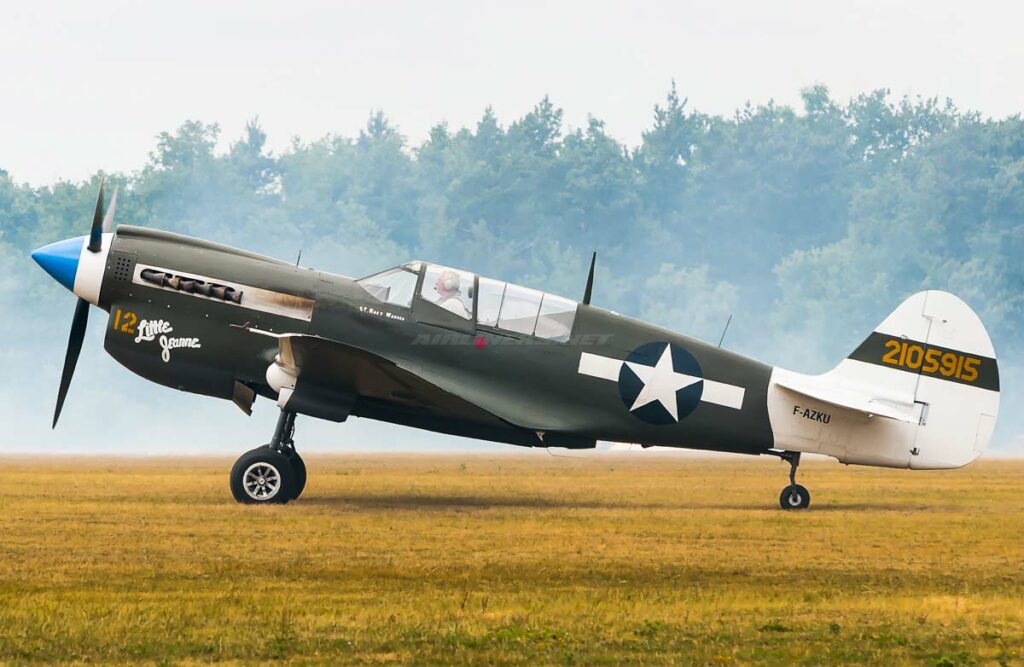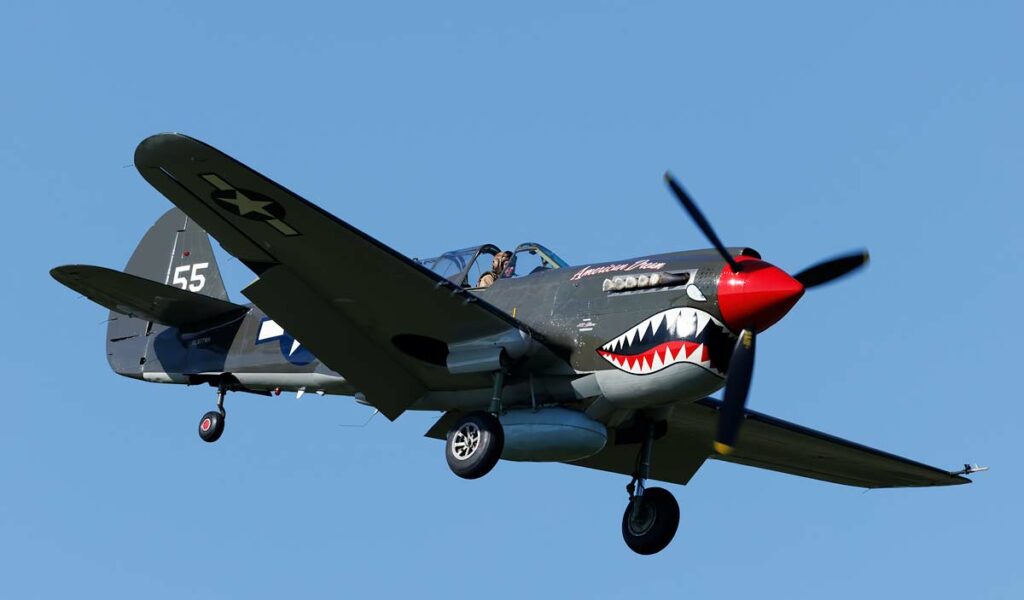The Curtiss P-40 Warhawk, a WWII single-engine fighter, known for its Allison V-1710 engine, robust design, and versatility in various combat roles.
This article examines the Curtiss P-40 Warhawk, a significant World War II fighter aircraft. The history section explores its development, highlighting the strategic and technological context of the 1930s and 1940s. The design segment focuses on its specifications, advantages, and limitations. Performance analysis includes engine details, speed, altitude, and range, along with comparisons to contemporary fighters. The military use section discusses its armament, combat roles, operational history, and competitors. The conclusion reflects on the P-40’s impact on wartime aviation and its legacy.
The Curtiss P-40 Warhawk was a prominent American single-engine, single-seat fighter aircraft used during World War II. It gained fame for its durability, versatility, and distinctive appearance, including the famous “shark mouth” nose art.

History of the Development of the Curtiss P-40 Warhawk:
The development of the P-40 began in the late 1930s, a time marked by rapid advancements in aviation technology and growing global military tensions. Curtiss Aeroplane and Motor Company aimed to create a fighter that could meet the rising demands of modern aerial combat. The program was launched to provide the United States and its allies with a reliable, effective fighter capable of various roles, from air superiority to ground attack.
The P-40 made its first flight on October 14, 1938. It was designed to utilize the Allison V-1710 engine, one of the most powerful American engines at the time. The aircraft was developed to fill a gap in the U.S. military’s fighter arsenal and was one of the first to combine a powerful engine with a sturdy airframe capable of withstanding rigorous combat conditions.
Design of the Curtiss P-40 Warhawk:
The P-40 Warhawk featured a length of approximately 31 feet 9 inches (9.7 meters) and a wingspan of 37 feet 4 inches (11.4 meters). Its design was a blend of traditional and modern elements, with an all-metal structure and a semi-monocoque fuselage.
Powered by the Allison V-1710 engine, which provided around 1,040 horsepower (775 kW), the P-40 was capable of carrying a variety of armaments, including machine guns and bombs. Its design allowed for good low-altitude speed and climb rates, making it effective in ground attack roles.
However, the P-40 had its limitations. Its performance at high altitudes was inferior to some contemporaries due to the Allison engine’s lack of a supercharger. Additionally, while rugged, it was less agile than other fighters like the Japanese Mitsubishi A6M Zero or the British Supermarine Spitfire.
Performance of the Curtiss P-40 Warhawk:
In terms of performance, the P-40 was capable but not outstanding compared to its contemporaries. It could reach a top speed of around 360 mph (580 km/h) and had a service ceiling of 29,000 feet (8,840 meters). Its range extended to about 650 miles (1,046 kilometers).
When compared to other fighters of the era, the P-40 was generally slower and less maneuverable at high altitudes. However, its robust construction made it more survivable in combat.

Military Use and Combat of the Curtiss P-40 Warhawk:
The P-40’s armament typically consisted of six .50 caliber machine guns, and it was capable of carrying bombs for ground-attack missions. It saw extensive use in multiple theaters of World War II, including the North African campaign, the Pacific War, and the Chinese-Burmese-Indian theater.
The Warhawk faced tough competition from advanced Axis fighters but proved effective in the hands of skilled pilots. It was exported to several Allied nations, including the UK, Australia, and China.
The P-40 was gradually phased out of frontline service as more advanced aircraft like the P-51 Mustang and P-47 Thunderbolt became available. Its last significant military use was during the early post-war years.
The Curtiss P-40 Warhawk played a vital role in World War II, serving on various fronts and in multiple roles. Its design and performance reflected the technological and strategic challenges of the era. While outclassed by later war designs, the P-40’s versatility and ruggedness made it a valuable asset to the Allies. Its legacy endures as a symbol of American industrial and military capability during a pivotal moment in global history.
Back to the Warbirds section.